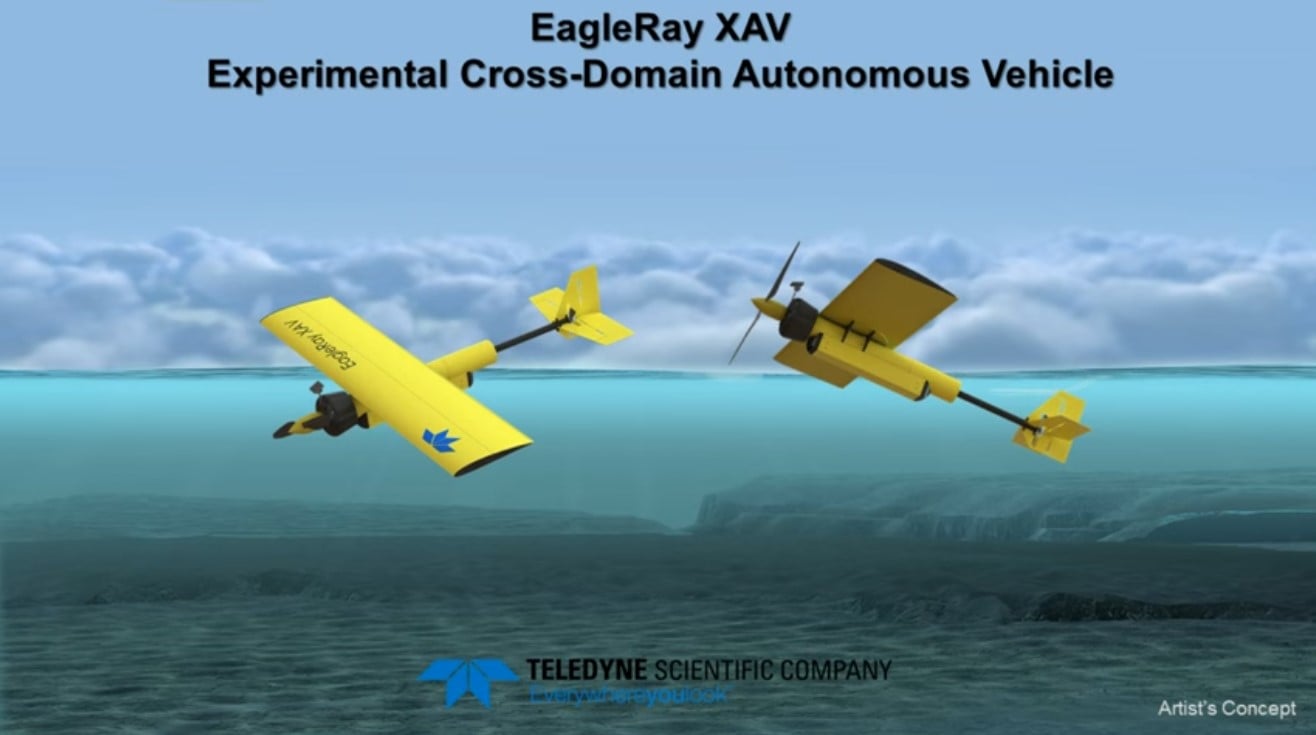A team of researchers from North Carolina State University has managed to develop the first flying submarine.
The flying submarine is an unmanned aircraft that is capable of traveling through the air as well as underwater, with the capability to transition seamlessly and repeatedly between the air and the ocean. The submarine is named the EagleRay XAV, and was developed with funding and assistance from Teledyne Scientific. The flying submarine has potential applications in areas such as tracking and observing wildlife.
A Ph.D. student at North Carolina State University, Warren Weisler, commented on the project, stating that “Maintaining aerial surveillance can use a lot of energy…The EagleRay can conserve energy by spending some of its time in water…For example, the EagleRay could track a fast-moving pod of dolphins from the air, then spend time loitering in the water if the dolphins stop to take advantage of a good feeding spot. The EagleRay could then resume flight when the dolphins begin moving again.”
The ability of the flying submarine to transition between flying and moving through the water is a unique aspect that makes it well-suited to its task of long expeditions. By being able to just float about in the water, the potential flight span of the vehicle is massively increased – giving researchers the opportunity to study wildlife in ways that might not have previously been possible.
William Stewart, another Ph.D. student who worked on the project, stated that “The EagleRay could also rapidly move underwater sensors from location to location…it could even perform underwater monitoring that most unmanned aerial vehicles can’t…for example, sonar only works underwater. If you’re seeking a sonar target, the EagleRay could fly to a site, submerge to take sonar readings, and then resume flight to take readings elsewhere. Historically, an aircraft would have to drop sonobuoys to collect sonar data.”
The flying submarine research team was started when a group of North Carolina State faculty, led by assistant professor of Mechanical and Aerospace Engineering Matthew Byrant, won a research contract from Teledyne back in 2014. By the end of 2016, the team had created a prototype, with a paper finally published on the flying submarine in 2017.
“A key point regarding the EagleRay design is that it is scalable – you can make larger or smaller models as needed,” Stewart says. “It really depends on the size of the desired payload, how long you’d need it to operate, and so on.”
Being able to take the technology from this relatively small flying submarine and apply it at a larger scale is significant, and it may revolutionize the field of oceanic wildlife tracking. With the combination of the ability to both fly and swim underwater, the utility of a single craft could lead to significant increases in both ability and savings for research vehicles moving forward. Right now there’s only a single flying submarine, but there’s certainly potential for the technology to be rolled out on a larger scale.





